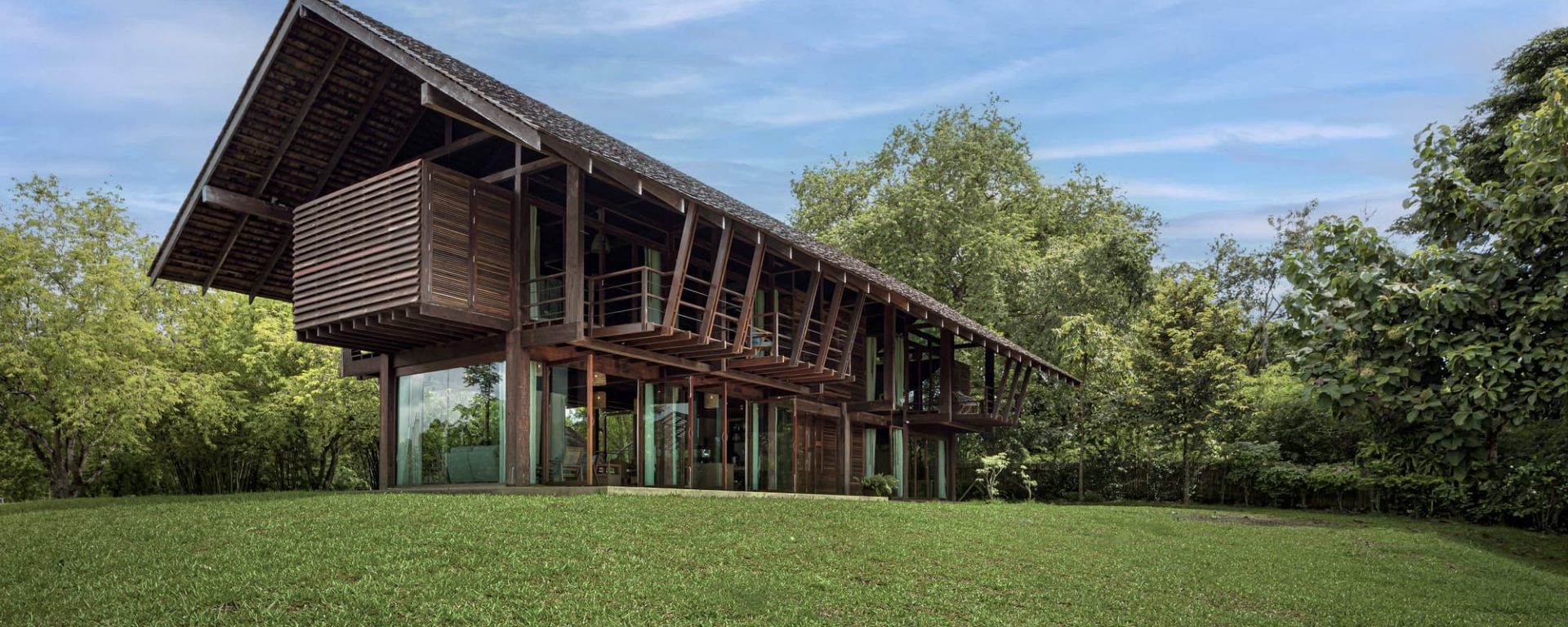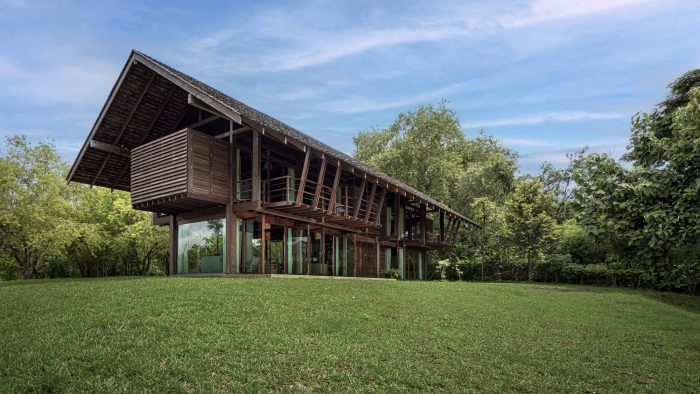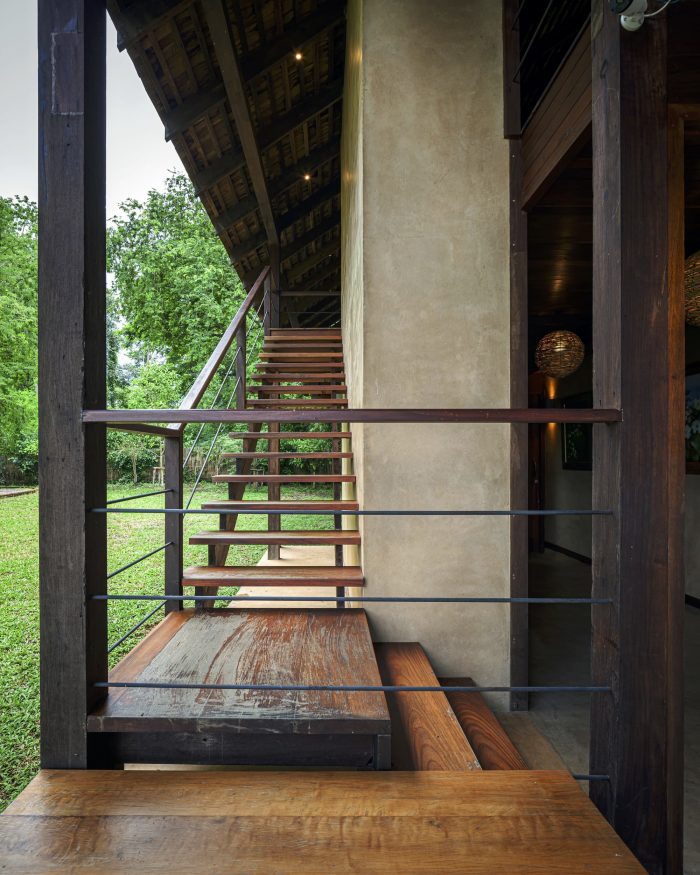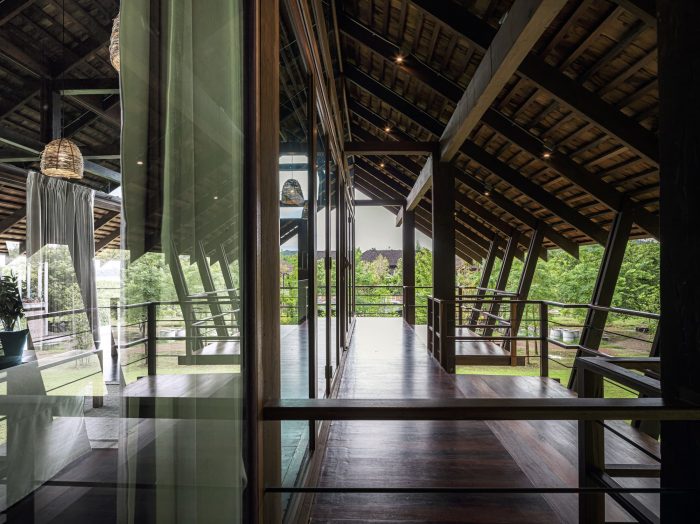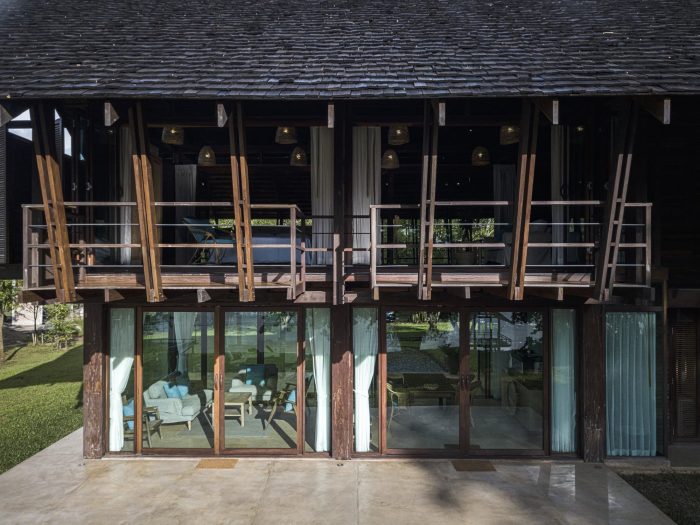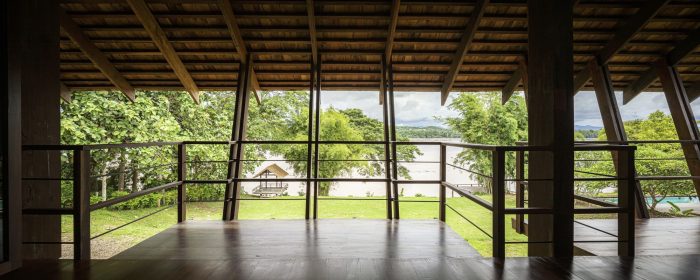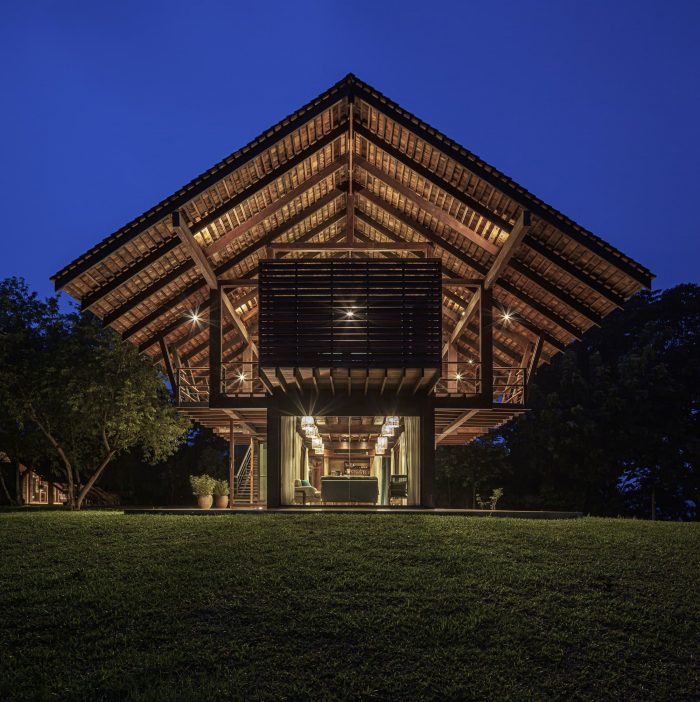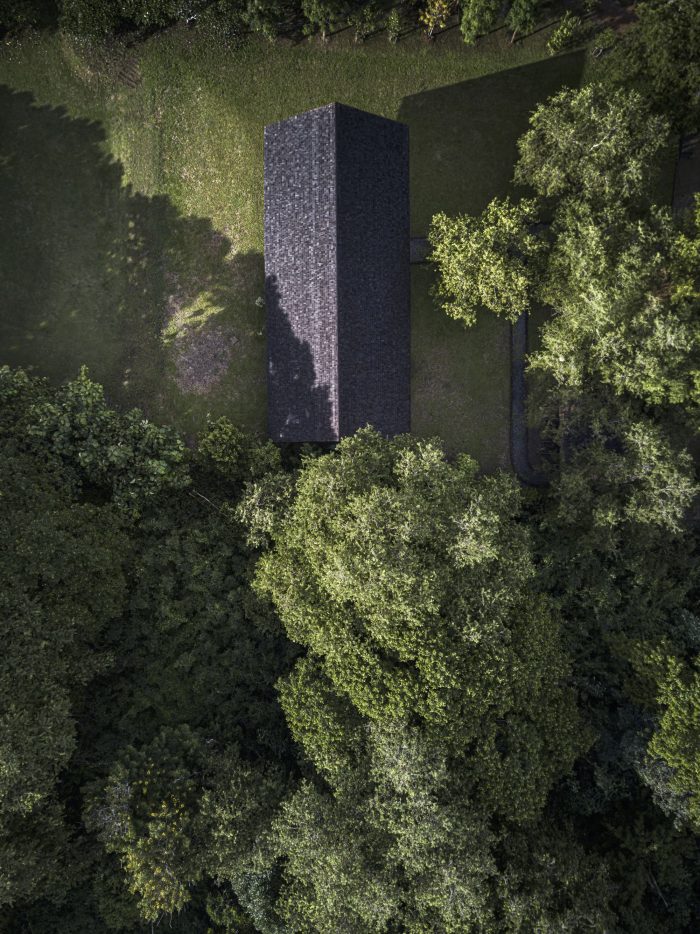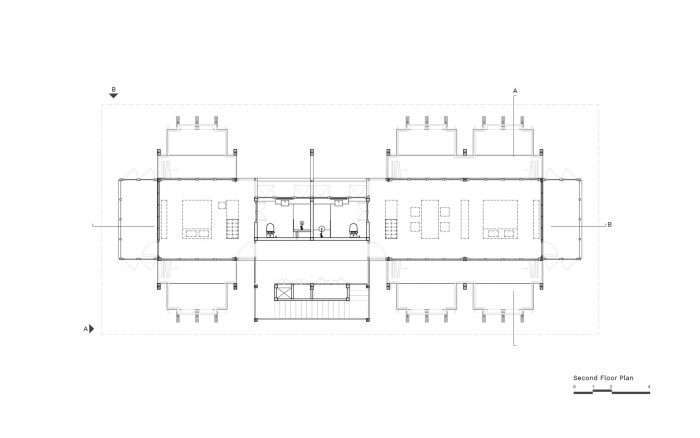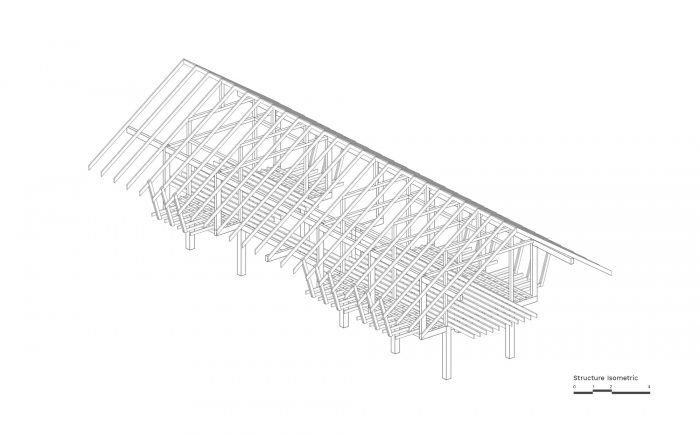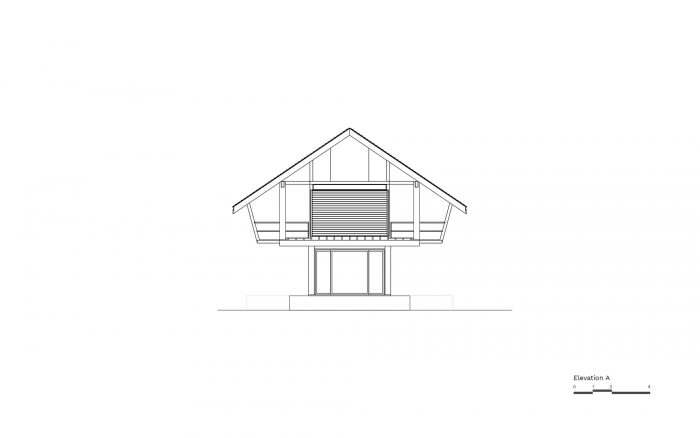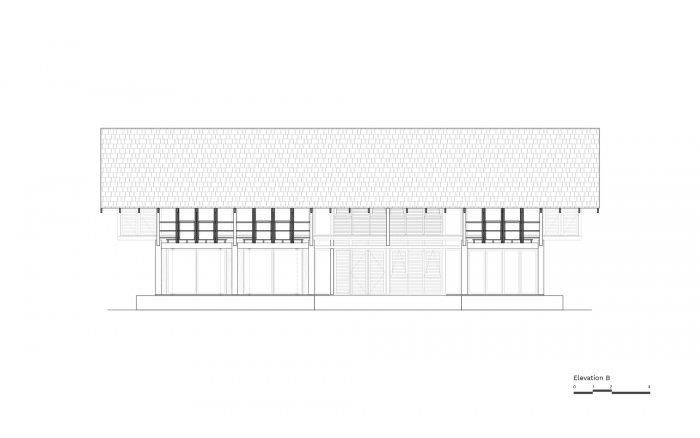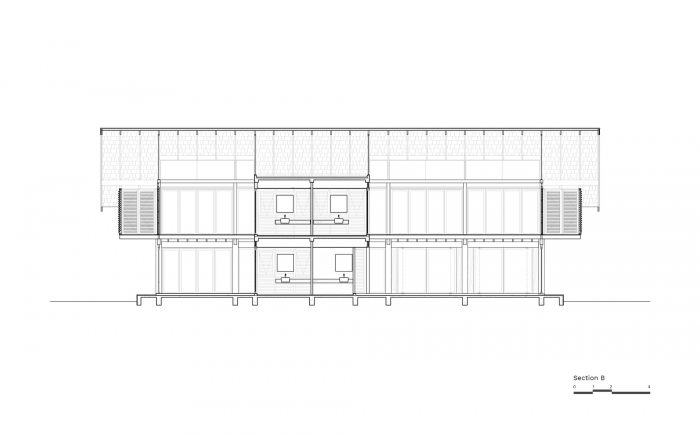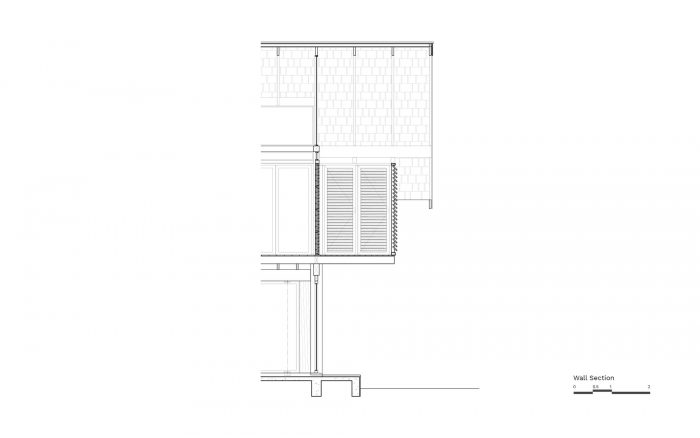湄公河之家 “是经过精心设计的,以表达地球主人的个性,湄公河的丰富环境,以及简单的乡土建筑感。房屋立面强烈的水平线反映了宁静的湄公河的迷人线条。为了创造一个宁静的氛围,所有的建筑元素都被设计成简单、谦逊、诚实和直截了当。
Mekong House is carefully crafted to express to earth owner’s personality, the rich environment of the Mekong River, and a sense of simple vernacular architecture. The strong horizontal line of the house elevation reflects the stunning line of the serene Mekong River. To create a tranquil atmosphere, all the architectural elements are designed to be simple, humble, honest, and straightforward.
房屋的规划设计结合了现代化的开放式设计和当地人的生活方式。湄公河之家简单的矩形平面设计是拥抱自然通风的关键,同时也创造了项目的全景河景。一系列二楼的木制阳台,灵感来自于泰国当地的东北村落,被设计成一个过渡空间、多种活动区域和遮阳装置。在乡土屋檐的大阴凉下,该项目将所有的机械工程、电力设施和浴室打包成一个单一的混凝土核心,以最大限度地扩大房屋的开口和房屋外墙的清洁表面。
The planning of the house is designed with a combination of the modernized open-plan and local vernacular way of life. The simple rectangular floor plan of Mekong House is the key to embracing natural ventilation, and meanwhile creating the panoramic river view of the project. A series of second-floor timber balconies, inspired by the local northeastern village of Thailand, is designed as a transitional space, multi-activity area, and shading device. Under the big shade of the vernacular gable roof, the project packs all of the mechanical works, electrical utilities, and bathrooms as one single concrete core to maximize the house’s opening and clean surface of the house’s facade.
主要的建筑材料和结构是来自一个废弃的小型米厂的再利用木材。泥土与稻草混合的墙面装饰与当地的红色木材(Xylia xylocarpa)形成对比,是表达当地工艺之美的方式。手工制作的建筑构造融合在丰富的景观中,反映了业主的信念,即成为自然的一小部分。建筑材料,如木瓦、木梁和柱子都是风化材料,说明了气候随季节变化的画面。在热带气候的暴风雨季节,由于吸收了湿气,房子被涂成了深色。另一方面,木材在干燥的季节变得更加明亮和苍白。
The main building material and structure are the reused timbers from an abandoned small-scale rice mill. The earth mixed with rice straw wall finish contrasting with the native red timber (Xylia xylocarpa) is the way to express the beauty of local craftsmanship. Handmade architectural tectonics blended in the rich landscape reflects the owner’s belief to be a small part of nature. The building material, such as wooden shingles, timber beams, and columns are all weathering materials that illustrate the picture of changing climate over seasons. Absorbing wetness, the house is painted to be a darker color in the storm season of tropical climate. On the other hand, the timber becomes brighter and pale in the dry season.
湄公河房屋在白天的气氛与晚上不同。由于强烈的阳光,在白天屋顶天花板的深色阴影的感觉是这种热带房屋的独特特征,提供了舒适的室内生活空间。相反,为了避免干扰黑暗的天空,屋顶天花板在夜间通过一个与木头椽子结合的隐藏的聚光灯间接地突出发光。
Mekong house’s atmosphere in the daytime is different from the night. Resulting of the strong sunlight, the perception of the dark shade of the roof ceiling in the daytime is a unique characteristic of this tropical house and provides comfortable interior living space. On the contrary, to avoid disturbing the dark sky, the roof ceiling at night is indirectly highlighted to glow by a hidden spotlight integrated with the timber rafter.
在整个季节变化中,该项目用泰国东北部乡土建筑的简单语言创造了一个简陋的现代生活空间。放慢现代化的生活方式,形成了一个宁静的氛围和一个与湄公河一致的简单平面图。阴影、阴影和材料质地在这个房子里很重要。因此,该项目是为了吸收丰富的热带气候而精心设计的,并表现为与丰富的湄公河环境相融合的脚踏实地的设计。
Throughout the seasonal change, the project creates a humble contemporary living space with the simple language of the northeastern vernacular architecture of Thailand. Slowing down the modernized lifestyle is resulting in a serene atmosphere and a simple floor plan that is aligned with the Mekong River. Shade, shadow, and material texture matter in this house. As a result, the project is crafted to absorb the rich tropical climate and express itself as the down to Earth design blended with the rich Mekong environment.
Architects: PAVA architects
Area : 200 m²
Year : 2022
Photographs :Spaceshift Studio
Lead Architects : Pacharapan Ratananakorn, Varat Limwibul
Client : Slow Life Community
City : Chiang Khan
Country : Thailand

